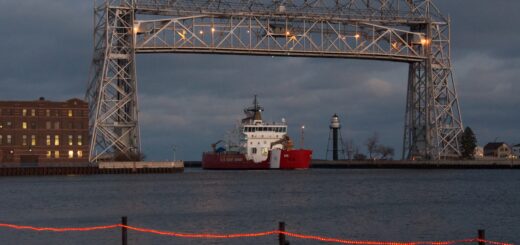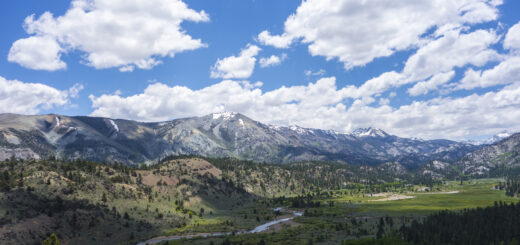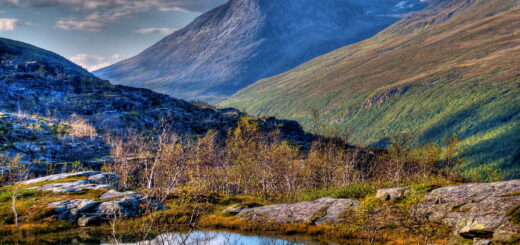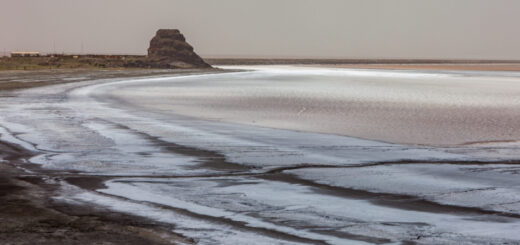Research Brief: How Climate Change Impacts Inverse Stratification
0Lake research has historically focused on summer stratification and fall turnover, but winter-time dynamics, particularly inverse stratification, can also greatly influence lake processes. Inverse stratification occurs as freshwater becomes less dense as temperatures cool below 4ᵒC, leading to inverse stratification.
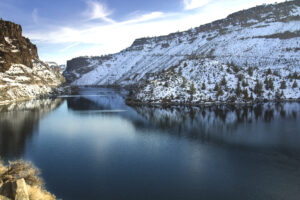
Lake Billy Chinook, Oregon, in the winter. (Credit: Bonnie Moreland via Flickr Public Domain)
Winter and summer stratification have similar ecological and biogeochemical importance—however, the inverse stratification that occurs in the winter is often dismissed in scientific research. A 2021 study published in Limnology and Oceanography Letters investigated the expected influence of climate change on winter stratification in northern lakes.1
Methods
Three climate scenarios (referred to as Representative Concentration Pathways (RCPs)) were considered: RCP 2.6 is the low-emission scenario, with emissions declining around 2020; RCP 6.0 is the medium-to-high scenario, where emissions peak around 2080 and then decline; and finally, RCP 8.5 is the high-emission scenario wherein emissions continue to rise throughout the 21st century.
Similar to other studies, duration of lake stratification was calculated from lake temperature and the presence of stratification was determined based on water density thresholds. “A lake was considered stratified when a specific density difference threshold between surface and bottom waters was exceeded and, at the same time, the lake surface temperature [. . .] was colder than that at depth.”1
The study examined 12,242 typical lakes, which were then categorized based on their thermal categorization scheme and their thermal region. These winter dynamics refer to mixing regimes defined according to the water column average temperature at the time of ice formation.1
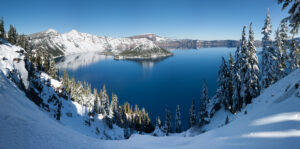
Panoramic winter view of Crater Lake in Crater Lake National Park, Oregon, from Rim Village. (Credit: WolfmanSF via Wikimedia Commons CC BY-SA 3.0)
Thermal categorization schemes included cryostratified and cryomictic lakes. The difference between the two is that “cryostratified lakes exhibit winter stratification near the ice surface and have depth averaged temperatures between 2ᵒC degrees and 4ᵒC, while cryomictic lakes have depth averaged temperatures between 0ᵒC and 2ᵒC at the time of ice formation.”1,2 The study sorted the lakes into one of the following thermal regions: Northern Frigid, Northern Cool, Northern Temperate, and Northern Warm.
Results
Differences between cryomictic and cryostratified lakes were observed under RCP 6.0 and 8.5 but not under 2.6. Under all of the climate scenarios, lakes were unlikely to change the thermal categorization scheme, with 0.1–1% of the studied lakes projected to transition from cryomictic to cryostratified and only 1–3% transitioning from cryostratified to cryomictic by the end of the century (2070–2099).
Average percentage changes under each of the climate scenarios varied depending on the region, with the most impacted areas being those that will no longer experience inverse stratification by the end of the century. Under RCP 2.6, 6.0 and 8.5, respectively, results suggest that 35%, 45% and 69% of Northern Warm lakes that currently experience winter stratification will no longer inversely stratify.
Repercussions of this loss will alter lake ecosystems. A shorter period of winter stratification can influence the interactions between surface and bottom waters. Most notably, the changes in the mixing of oxygenated waters and hypoxia are both possible outcomes as a result of the loss of inverse stratification. Such changes will impact habitat suitability, lake productivity and overall water quality, making developing an understanding of winter dynamics essential in a warming world.
Source
- Woolway, R.I., Denfeld, B., Tan, Z., Jansen, J., Weyhenmeyer, G.A. and La Fuente, S. (2022), Winter inverse lake stratification under historic and future climate change. Limnol. Oceanogr. Lett, 7: 302-311. https://doi.org/10.1002/lol2.10231
- Yang, B., and others. 2021. A new thermal categorization of ice-covered lakes. Geophys. Res. Lett.48: e2020GL091374.doi:10.1029/2020GL091374




